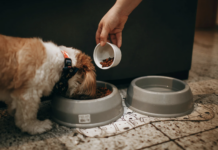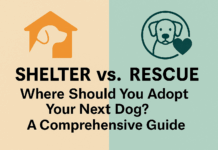Last Updated on April 3, 2024 by Dog Lover
How Much Should a Maltipoo Cost?
When it comes to making a very important investment decision on a puppy, nobody likes to be taken advantage of, paid much more than they should be, or pressured into buying quickly.
On the other hand, buying a puppy for a steal only to later find yourself already attached to a dog with much more health and/or behavioral problems than you bargained for is not fun either.
To be realistic, what can you expect to pay for a well-bred healthy Maltese from a reputable breeder?
Maltipoo prices can range from $500 to $2,500, although a price tag between $800 and $1,000 is common. Factors such as the breeder’s reputation and location; the puppy’s age, size, and pedigree; and current demand can influence the price.
There are also ongoing costs to consider, like food, grooming, and vet care. These can add up to $100 to $200 per month.
Below, we’ll help you understand the price fluctuations for Maltese puppies; we will also teach you about certain qualities to look out for in a breeder, tell you how to spot a lower breeder and give tips for finding older Maltese puppies in need of a new home.
Maltipoos are the perfect companion for young families, empty nesters, and everyone in between. They are very devoted to their humans; they love to accompany them on walks (and, of course, on the sofa). In addition, they are no cleaners and make great housemates.
What is the lifespan of a Maltipoo dog?
This dog is an amazing breed. Being a smaller dog with few health problems, the Maltipoo can have a lifespan range of between 10-15 years. This time frame is determined by many different factors, including the dog’s diet, routine, exercise, and overall health.
History of the Maltipoo
The Maltese Poodle also know as Maltipoo is a well-known hybrid dog breed between the Poodle and the Maltese.
The Maltese breed is believed to have originated in south-central Europe on the island of Malta.
The Maltese was bred to be royalty companions because of their small size and rich, adorable white coats. The Maltese’s popularity grew steadily over the years until they finally reached America in the 1800s.
Standard trees come in curly and in a variety of colors. They were bred clear as early as the 1500s in France and grew very popular in many other countries.
As their popularity grew, poodles continued to be bred to reduce their size to what we now call toy and miniature trees.
The Maltipoo is a relatively new blend that has only become popular in the last decade or so. The Maltipoo’s popularity stems from their cute puppy-like qualities and the ability to have more Maltese looks and characteristics while having a wider range of colors.

Adaptability
Good for an apartment or small living environment
Due to their small size, Maltipoos are very adaptable to small living environments such as apartments. Although they require their own daily exercise, the Maltipoos have relatively low energy levels than other toy-sized breeds.
If they are well socialized early in their lives, they are also very accommodating to oncoming visitors.
Very sensitive to temperature
The Maltipoo is a very loyal and loving breed. They are sensitive to unfamiliar environments and rigorous discipline.
They are always looking for your affection, and while other dogs tolerate loud noises or chaotic housetraining, the Maltipoo receives much more praise and positive reinforcement in a calm environment.
Low tolerance for being left alone
While it is not healthy to leave any dog alone for too long, the Maltipoo is particularly sensitive to being left alone for long periods and will develop separation anxiety, leading to other behavioral problems such as chewing, barking, whining and more.
If you give your Maltese plenty of love and attention, they will repay you with perfect adoring behavior.
Maltipoo dog Good for first-time dog owners
Because of the simple and tidy nature of the Maltipoo, they can be an ideal option for first-time dog owners.
However, you will need to practice a lot of patience during house training as a puppy, as with any dog. Once you’ve spent that time bonding with them, they will be your most loyal friend in life.
Managing Extreme Weather Conditions
Maltipoos, with their charming personalities and adorable looks, make perfect companions for indoor living. Despite their capacity to develop a dense fur coat, Maltipoos are particularly susceptible to extreme weather conditions due to their small stature.
It’s crucial for potential Maltipoo owners to understand how to protect these delightful dogs from harsh temperatures, ensuring they thrive in a home environment.
Summer Care Tips for Your Maltipoo
During the scorching summer months, Maltipoos enjoy playing outside but require special attention to stay safe. To keep your Maltipoo cool and comfortable, provide a shaded area where they can escape the sun’s intensity.
Access to fresh, cool water is essential to prevent dehydration. Additionally, it’s important to monitor the time they spend outdoors to avoid heat exhaustion.
Maltipoos are happiest when they can enjoy the warmth without the risk, making early morning or late evening the best times for outdoor activities.
Winter Wellness for Maltipoos
The winter season presents a different set of challenges for Maltipoos. Their preference for short outdoor sessions, typically around 15 minutes, is due to their sensitivity to cold weather.
To ensure your Maltipoo’s comfort during these chilly outings, investing in protective gear such as a dog coat or sweater is highly recommended. This not only keeps them warm but also encourages brief but enjoyable outdoor activities during the colder months.
Essential Gear for Maltipoo Comfort
In addition to seasonal care, providing your Maltipoo with a comfortable dog collar is advisable. A well-fitted collar enhances their safety during walks and adds a layer of convenience for the owner.
When selecting a collar, consider one that is durable, comfortable, and suitable for your Maltipoo’s size and coat type.
Friendliness
The Maltipoo is very loyal and affectionate towards family and loves to bond with his owners. This is because the Poodle was bred to work as a water dog with its owners, and the Maltese was bred to be a companion to a charcoal dog.
They are very good at tolerating small children and toddlers, but it is very important to teach your children how to handle the Maltese properly and be gentle because of their small size.
If a larger breed could tolerate a baby being dropped and brushed, this can be a critical situation for such a small breed.
Dog Friendly
Maltipoos are excellent pack companions and get on very well with other dogs.
They don’t have a dominant temperament, and their nature is to run around and play rather than fight. With proper socialization early in your Maltipoos life, they will grow up to be the best and most caring friends of all other dogs.

Friendly with visitors
Although the Maltipoo can be a little sniffy, they quickly warm up to new people if they have a kind and friendly tone. They will rarely if ever, be aggressive towards strangers.
They are more likely to either run to greet visitors to take advantage of a pet or keep their distance when they have a more nervous temperament.
Trainability – Easy to train
Chess players love to spend time with their owners and develop quick links with obedience training commands as they crave positive reinforcement. While many breeds are very smart, they may have a different plan and need more time to focus on obeying you.
Intelligent and Very Smart
Maltese are very intelligent, as their Poodle ancestors are in the two smartest races. They pick things up very quickly and crave your affection, which makes training them very easy.
High “Prey Drive.”
Maltese are very curious dogs, but they have no aggression or prey drive. They are most comfortable making friends with new dogs or people and are mostly bred to be loyal companion/kitten dogs.
They Tend to Bark A lot.
Maltipoos can be extremely loud and tend to bark in strange or unfamiliar environments. Your dog barking can be a sign of fear, anxiety, or curiosity. Depending on the cause, you can also train the Maltipoo to bark in suitable conditions as a preventative measure.
General health
The lifespan of a Maltipoo is typically 14 to 15 years. So, adopting a Maltipoo is a long-term commitment! However, potential owners should be aware of a few considerations:
- Health Issues: Like all breeds, Maltipoos can be prone to certain health problems, such as dental issues and patellar luxation. Regular veterinary care is essential.
- Separation Anxiety: Due to their strong bond with their owners, Maltipoos can suffer from separation anxiety if left alone for long periods. Proper training and socialization can help manage this.
- Maintenance: Their coat requires regular grooming to prevent matting and keep them looking their best.
However, some of these potential health risks can be reduced through appropriate breeding and genetic testing.
Care and maintenance requirements
The Maltipoo’s coat test is low to none, which means their hair will continue to grow and will need regular grooming every 6-12 weeks. Maltipoos usually keep themselves very clean.
They will need regular grooming and daily brushing to keep your Maltipoos coat matted and tangle-free. Lighter-colored Maltipoos are also prone to tear stains, which can be reduced or eliminated with proper grooming.
Size
The body size of the Maltipoo varies depending on whether the parent is a toy or a miniature puppy. They are typically 8 to 14 inches long and weigh 5 to 20 pounds.
If you consider adding a Maltipoo to a family with young children, larger sizes may be better. A Maltipoo can tolerate a lot from a toddler without being aggressive, but the larger the dog, the safer it will be if the child is too rough.
Actual Maltipoo prices from real breeders
To give you a realistic idea of real prices, take a look at these well-known Maltipoo breeders and their various prices for Maltipoo puppies.
Well Known Breeders, Location, and Prices
Playful Pups For You Location: Georgia $650 – $850
Judy’s Pups Location: California $875
Denning Farms Location: Iowa $950 – $1,100
Pierce’s Precious Puppies Location: Illinois $1,800
Artistry Pups Location: Florida $2,000 – $2,500
Take Note: Some breeders, such as Playful Puppies for You and Pierce’s Precious Puppies, will send you a puppy on request. You shall be responsible for all associated costs.
Other breeders refuse puppies to save undue stress. Please inquire immediately before adopting a particular puppy.
10 Main Factors Affecting the Price of a Maltipoo Puppy
Is there any reason for the wide range of prices for Malted Puppies?
Well, some people might say yes, and some might say no.
Here are the most common factors that will most likely influence a puppy’s price range, but keep in mind that some breeders, especially reputable ones, don’t hesitate to charge exorbitant prices for average pups.
1. Breeder reputation
Experienced Maltipoo breeders who consistently strive to produce the highest quality and healthiest puppies and are committed to setting breed standards hoping that one day the American Kennel Club (AKC) and similar organizations will see official recognition for the breed will usually charge more for their puppies.
2. Puppy age
Most potential puppy owners want to buy puppies as soon as they become available for sale not to miss an important socialization opportunity.
The older the puppy grows, the fewer people tend to be interested, so the price is often reduced, sometimes dramatically.
3. Current popularity of the breed
When the popularity of a breed, or in this case a pedigree breed, increases dramatically, the price often increases. When interest wanes, prices usually fall.
4. Puppy Registration
The price of a puppy could be affected if the parents or litter are registered with groups such as the AKC.
5. Genetic tests and health checks
Quality breeders will test older dogs before breeding to rule out the possibility of passing on hereditary health conditions to the litter.
After breeding, numerous veterinary visits are routine to ensure that the pregnancy is progressing normally and the resulting litter is healthy and successful.
The associated costs add up quickly and lead to more expensive puppies.
6. Coat type and/or color
Some Maltipoo puppy breeders will charge more for a puppy with a certain hair type or color, which happens to be in high demand.
7. Body size
Puppies that are expected to be quite small as adults (less than 5 pounds) usually cost quite a bit more than puppies that are expected to be in the normal range for Maltese puppies (average 7-14 pounds).
Unfortunately, not all breeders are quite honest, and some may try to convince you that even though a puppy’s bloodline contains several dwarf puppies, the puppy should stay on the small side.
Don’t be fooled! : Knowing what sizes to expect from a puppy’s parent will help you avoid ripping out your wallet when it’s time to whip out your purse.
8. Generation
The F1 generation Maltipoo puppies are often the least expensive as only one Maltese, and one Poodle is required to create them.
Let’s assume that a breeding service or artificial insemination is used. In this case, the breeder may only need to keep one dog on his premises, although using an external source for semen may be expensive and raise the price of the pups.
Generations from F2 and beyond take much longer to establish, as the breeder has to wait until their F1 dogs are mature enough to breed and then wait for the next generation to mature before they can be bred.
It also requires the breeder to house, feed, and cares for several (sometimes many) dogs so that their litters are not related.
All of this extra time and effort adds to the cost of several generations of puppies.
9. Pedigree
Suppose one or both of Maltipoo’s parents have placed high in the show ring in the past. In that case, the record of their winnings will be included on the pup’s pedigree and be reflected in his price.
10. Breeder’s Location
F1-generation puppies are often the cheapest, as they require only one malt and one Poodle to create.
Suppose a breeding service or artificial insemination is used. In that case, the breeder may only need to keep one dog on their premises. However, using an external source for semen can be expensive and increase the puppy’s price.
Generations from F2 and beyond take much longer to establish, as the breeder has to wait until their F1 dogs are mature enough to breed and then wait for the next generation to mature before they can be bred.
It also requires the breeder to house, feed, and care for several (sometimes many) dogs so that their litters are not related.
All of this extra time and effort adds to the cost of several generations of puppies.
9. The Maltipoo’s Family tree
Suppose one or both of Maltipoo’s parents have previously placed high in the show ring. In that case, their record of wins will be added to the puppy’s pedigree and reflected in its price.
10. Location of the breeder
Breeders in or near major cities may also happen to charge higher prices for their dogs.
This can also happen because the breeder is marketing these dogs to a larger audience who tend to earn higher wages than rural residents.
How to easily tell the difference between a good and a bad Maltipoo’s grower
The world of dog breeders can be a huge and confusing place. Knowing exactly how to tell the difference between a quality breeder and one who is just looking to make a quick profit can save you time and avoid unnecessary headaches.
Quality Maltipoo Breeders
Reputable Maltipoo’s breeders genuinely care about their dogs and vet all potential buyers to determine whether or not a puppy will be well cared for.
Plus: Their puppies and breeding stock are healthy, clean, well-fed, and friendly.
- The facilities are air-conditioned, sanitary, and odor-free.
- Health checks are done regularly, and results are available
- Educating the buyer about the breed in general, caring for a new puppy, vaccinations, and possible health problems is standard practice.
- Both the breeder and the buyer will also sign a contract describing the puppy’s care by the breeder and the buyer’s responsibilities.
- They should recommend helpful resources such as The Complete Guide to Maltipoos, an excellent, must-have book covering almost every aspect of life with these adorable dogs.
Take Note: When deciding whether a Maltipoo breeder is truly exceptional, the final factor to consider is whether they will discuss the dog’s care, grooming, and training with you.
While these dogs are usually only very light shelters, proper grooming is still essential for overall health.
However, a quality grooming expert should certainly be prepared to discuss with you what to expect in terms of Maltipoo routine maintenance and necessary equipment.
Remember to Look out for these breeders’ red flags.
Poor quality growers or breeders are usually fairly easy to spot.
Problems such as not acting professionally or keeping more dogs on-site than can be properly cared for are obvious signs.
See also:
- Dirtiness and bad smells.
- Testing dogs before breeding for inherited diseases.
- Puppies that have not yet been examined by a veterinarian and given a clean bill of health.
- Sick, fearful, shy, unfriendly, or aggressive dogs.
- Fast sale.
- Lack of real contract and time spent on education.
- Unwillingness to show buyers where puppies are kept.
Is there an opportunity to adopt?
The desire to adopt a Maltipoo in need of a stable and loving home is indeed admirable, but Maltipoos are such affectionate and playful family pets that they are not often put up for adoption.
Don’t lose hope, however. Check the following places below:
Dog’s – Shelters
Due to extenuating circumstances or rotten luck, these cute dogs sometimes end up in an animal shelter or in the custody of a rescue group.
To start, check with your local shelter and the people in the surrounding communities. If none are available, ask to be put on an emergency waiting list.
Adopting A Maltipoo Online
Websites like Petfinder and Adopt-a-Pet.com are excellent places to look for Maltipoos puppies waiting to be taken to a new home.
If you want to travel to look for your new dog, expand the search radius to include nearby big cities.
Do not underestimate the true power of social media when searching for an adaptable Maltese.
Get in touch with as many Maltipoo owners and groups as possible to get the word out about the type of puppy you would like to adopt. Maltipoo Facebook groups are perfect for this.
Finding a Rescue Groups
Check with rescue groups such as the American Maltese Association Rescue, Southern Comfort Malta Rescue, and Poo Mix Rescue, which work with Malta and Poodles. These types of groups often mix up both Maltese and breed dogs.
Fact Check
We strive to provide the latest valuable information for pet lovers with accuracy and fairness. If you would like to add to this post or advertise with us, don’t hesitate to reach us. If you see something that doesn’t look right, contact us!
Reference: Mydoodlemaltipoos.com

















